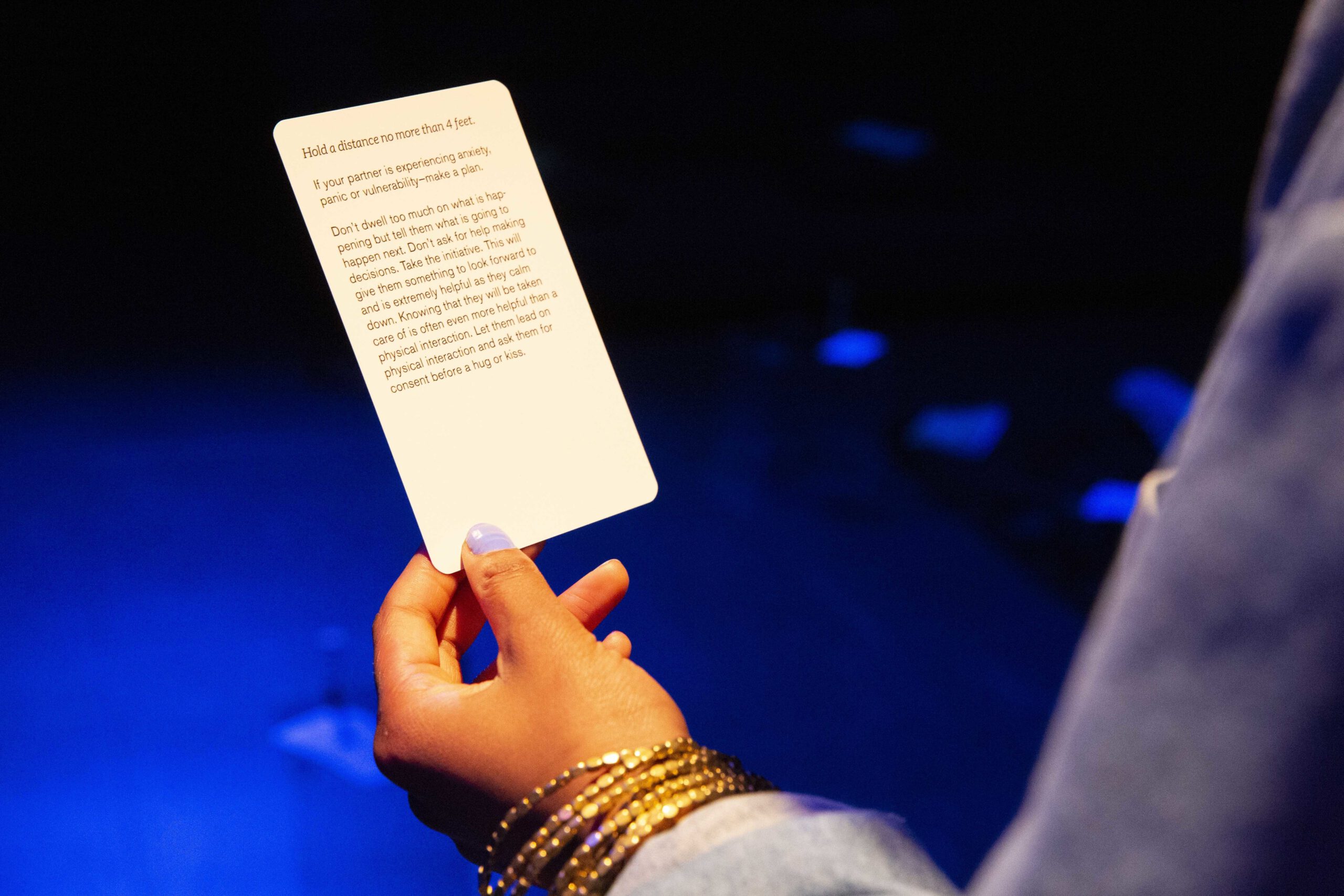
Short description:
Practicing Distance is a multi-part guide for preparing for our futures together post-quarantine. In each part, Jeff Kasper offers a series of short practices, beginning with an introduction on four proxemic distances—intimate, personal, social, public—then facilitating guided creative exercises to engage with solo or with a partner in imagined physical proximity during the time of the pandemic and beyond.
Content Warning:
Is this for me?
Maybe or maybe not. The content of these exercises may not be for you at this time. The practices offered are not created from a clinical perspective, therapist, or counselor, and instead have been developed by artists for peer-support, community building and educational purposes. Some require comfortable participation in intimate conversations, guided reflection, and consent-driven closeness with another human. As mindfulness activities can be deeply challenging for many folks navigating the potential of dysregulation, please note that these activities are based in guided––rather than unguided––methods grounded in trauma sensitivity. Opt out of any interactive or contemplative material that feels unfit for you, at any time. Come and go as you please. You are the expert of your own body mind.
For more context, see Introduction.
Personal distance [1.5-4 feet]: choreographing care
We monitor strangers and even intimates when they come into our personal space. It’s a matter of safety and our hard-wiring for survival. Engaging at personal distance requires vulnerability. In personal proximity––care must not always mean what is given or taken but what is sustained in negotiation between the two.
In The Ethics of Care, Dependence, and Disability, Eva Feder Kittay describes how personal dignity is closely related to independence, and the care that disabled people receive is seen as a way for them to achieve the greatest possible autonomy. She notes that, although it runs counter to how Western culture prioritizes independence and taboos dependence, human beings are naturally subject to periods of dependency. Instead of viewing assistance as a limitation, we should consider it to be a resource at the basis of a future society that is able to account for inevitable dependency relationships between “unequals” ensuring a fulfilling life both for the carer and the cared for.
In widening the scope of what can and should be considered to be the varying nuances of intimacy, Park McArthur and Constantina Zavitsanos remind us that those of us in the midst of care navigate dynamics of closeness that complicate the utility of actions and gestures most often associated with sexual intimacy. They question,
“What might be the consistency of this intimacy if the main caring action of care collective—wrapping arms around each other to lift and transfer bodies—weren’t so reminiscent of a hug? There are many ways to lift and transfer someone, one of which involves leaning forward so that the person lifting can grab around the liftee’s waist, pivoting from surface to surface. Really, how much of this is that we are often cheek-to-cheek in acts of care, head on shoulder? Should reasons for being this close be intimate ones?”
In reflecting on McArthur’s and Zavitsanos’s critical consideration of the offerings of their care collective, I am moved to act through the possibility that the activities of care, its constant rehearsals and routines, can produce intimacy without becoming fixed? Can the intimate actions and bodily movements of care work coordinate themselves in terms of the event that moves beyond exchange and towards a recognized and maintained spirit of mutuality?
SCORING CARE (20-30 mins)
track ideas on paper for 5 mins.
What do we mean when we say “care”? Is care a “choreography”?
How do choreographies represent or impact behavior?
In this exercise, you will create ‘choreographies for care’. Take a maximum of 15 minutes to complete the following steps:
1. Start with 5 minutes of free writing. Think about a time when you either offered or received care. If you can’t remember a time like that, make up a scenario. Describe it in great detail.
2. Create a numbered choreography where you break down each moment of care into little moments, bits, pieces, and gestures. You can use the space in this guide or make your own on a separate sheet of paper.
3. Take 5 mins. to share your choreography with a partner, or read it back to yourself.
001
002
003
004
005
006
007
008
009
010
011
012
013
014
015
For an example of a ‘care choreography’ download “lessons (vol. 1)” by the author.
Works Cited:
Eva Feder Kittay, “The Ethics of Care, Dependence, and Disability,” Ratio Juris. Vol. 24 No. 1 March 2011 (49–58)
Park McArthur and Constantina Zavitsanos, “Other forms of conviviality,” Women & Performance, October 20, 2013. Accessed: April 20, 2020 https://www.womenandperformance.org/ampersand/ampersand-articles/other-forms-of-conviviality.html